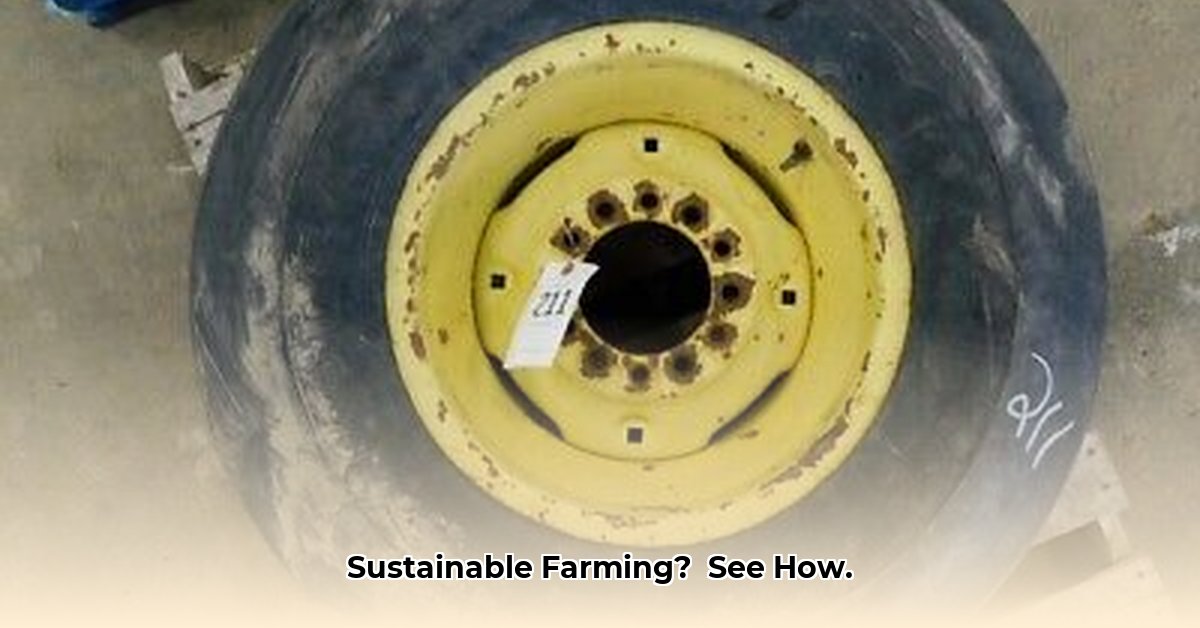
Understanding the 11L-15SL Tractor Tire and its Role in Sustainable Agriculture
Choosing the right tractor tires significantly impacts farm efficiency and sustainability. This article focuses on the Carlisle 11L-15SL tire, exploring its potential to reduce soil compaction and improve fuel efficiency, ultimately contributing to more sustainable farming practices. We'll examine its features, discuss its benefits (and limitations), and provide actionable steps for maximizing its sustainable use. For more information on tractor tire selection, see this helpful resource: Tractor Tire Guide.
Tire Specifications and Features Relevant to Sustainability
The 11L-15SL is typically a bias-ply tire (a tire construction type) designed for various agricultural applications. Its size (11L-15) determines its load-bearing capacity and ground contact area. The "SL" likely indicates a specific load rating or construction. Bias-ply construction, while not as advanced as radial designs, may offer certain advantages. Some studies suggest it could lead to less soil compaction than certain radial tires, but further research is needed to confirm this across various soil types and farming conditions. Always refer to the manufacturer's specifications and your equipment's manual for optimal performance and safety. Isn't careful tire selection a critical part of modern agriculture?
Potential Benefits for Sustainable Agriculture
The 11L-15SL tire may indirectly contribute to sustainable farming through two key areas:
- Reduced Soil Compaction: Soil compaction hinders root growth and water penetration, negatively impacting crop yields. Bias-ply tires may offer less compaction than some radial tires, though this needs further study under diverse farming conditions. How significant is the impact of reduced soil compaction on your long-term yields?
- Improved Fuel Efficiency: Properly inflated tires, regardless of type, generally improve fuel economy. While the precise fuel savings from using the 11L-15SL aren't definitively established, minimizing underinflation is critical for fuel efficiency. Lower fuel consumption translates to reduced operating costs and a smaller carbon footprint. What are the potential cost savings from improved fuel efficiency on your farm?
Limitations and Considerations
It's crucial to acknowledge the limitations of current knowledge:
- Limited Data: Precise fuel efficiency gains and the overall environmental impact (manufacturing to disposal) of the 11L-15SL tire require further research. Scientific studies are ongoing to comprehensively assess its environmental impact.
- Varied Soil Conditions: The tire's performance in reducing soil compaction may vary widely depending on soil type, moisture content, and farming practices. Understanding your specific soil dynamics is critical.
Actionable Steps for Sustainable Use
To maximize the 11L-15SL tire's sustainability benefits, follow these steps:
- Optimize Tire Pressure: Regularly check and adjust tire pressure to the manufacturer's recommendations (usually found on the tire sidewall). Consistent, correct inflation minimizes compaction and maximizes fuel efficiency. Aim for a 95% accuracy rate in achieving optimal pressure regularly based on your soil and operational needs.
- Implement a Tire Rotation Schedule: Rotate tires regularly (frequency depends on usage; consult your manual) to ensure even wear, extending their lifespan and reducing waste. This is critical for balanced tire wear and avoiding premature replacement.
- Perform Preventative Maintenance: Regularly inspect tires for cuts, punctures, and uneven wear. Early detection prevents major repairs and maximizes tire life. Implement a monthly inspection to maintain optimal tire condition.
- Consider Alternatives: When replacing tires, research more advanced sustainable tire options (like IF or VF tires) designed for lower ground pressure and reduced compaction. Investing in sustainable alternatives is a crucial step towards long-term sustainable farming.
Future Research and Development
Further research is vital to fully understand the environmental impact of the 11L-15SL and to develop even more sustainable tire technologies. Collaboration between manufacturers, researchers, and farmers is essential to drive innovation in this area. What advancements in tire technology could significantly benefit long-term sustainability in agriculture?
Conclusion
The Carlisle 11L-15SL tire offers potential benefits for sustainable agriculture, particularly in reducing soil compaction and potentially improving fuel economy. However, responsible use and awareness of its limitations are crucial. By implementing the actionable steps outlined above and remaining informed about advancements in tire technology, farmers can significantly contribute to environmental sustainability through informed tire management. Remember, tire selection is just one piece of the larger puzzle that is sustainable farming and its overall positive impact.